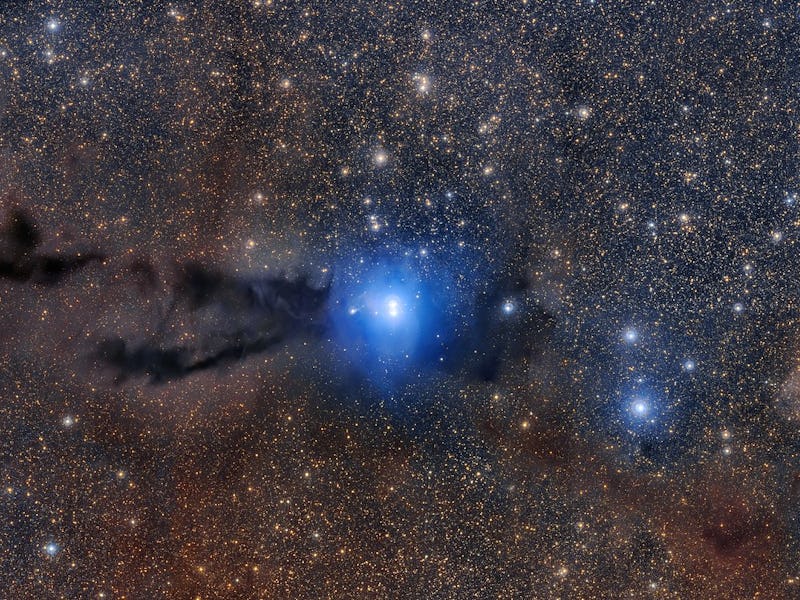This "Misshapen Snake" Nebula Is a Star Breeding Ground
From darkness emerges light.

Feast your eyes on Lupus 3 — a nebula 600 light-years away from Earth in the Scorpius constellation. This cosmic region might look like a massive intergalactic storm brewing, but it’s really a birthplace for millions of stars.
This dazzling snapshot of deep space was created from using images taken by the European Southern Observatory’s VLT and MPG/ESO telescopes in Chile. The telescopes captured a colossal cloud of pitch-black gas and dust — also known as a nebula — snaking across a backdrop of innumerable stars.
While you might have seen other images of nebulae radiating brilliant hues of greens, blues, and yellows, Lupus 3 is what’s known as a dark nebula, or an absorption nebula. These cosmic dust clouds are made up of extremely cold and dense particles that absorb and scatter the light emitted from stars behind them, creating what looks like blobs of ink streaking across the cosmos.
A dark cloud of cosmic dust snakes across this spectacular wide field image, illuminated by the brilliant light of new stars.
Lupus 3 might keep us from seeing whatever is beyond it, since like most dark nebulae, it is an active star-forming region. In certain areas of the nebula, gas, dust, and other materials are clumped together by gravitational forces creating dense zones within the cloud. These bundles of matter attract even more material and they eventually become dense enough to form stars.
The two radiant stars at the center of the image above are evidence of newborn stars being formed in the dark nebula. Early in their formative stage, they are completely veiled by the gas and dust that make up Lupus 3 and can only be detected by using infrared or radio wave detecting telescopes. But as these new stars continue to grow these the particles that once hid that area dissipate, revealing a shiny new star.
Understanding how nebulae behave over time is critical to comprehending star formation. In fact, scientists believe that the sun was created in a similar fashion, making this image both a hint of our solar system’s history — and eye-candy — all at once.